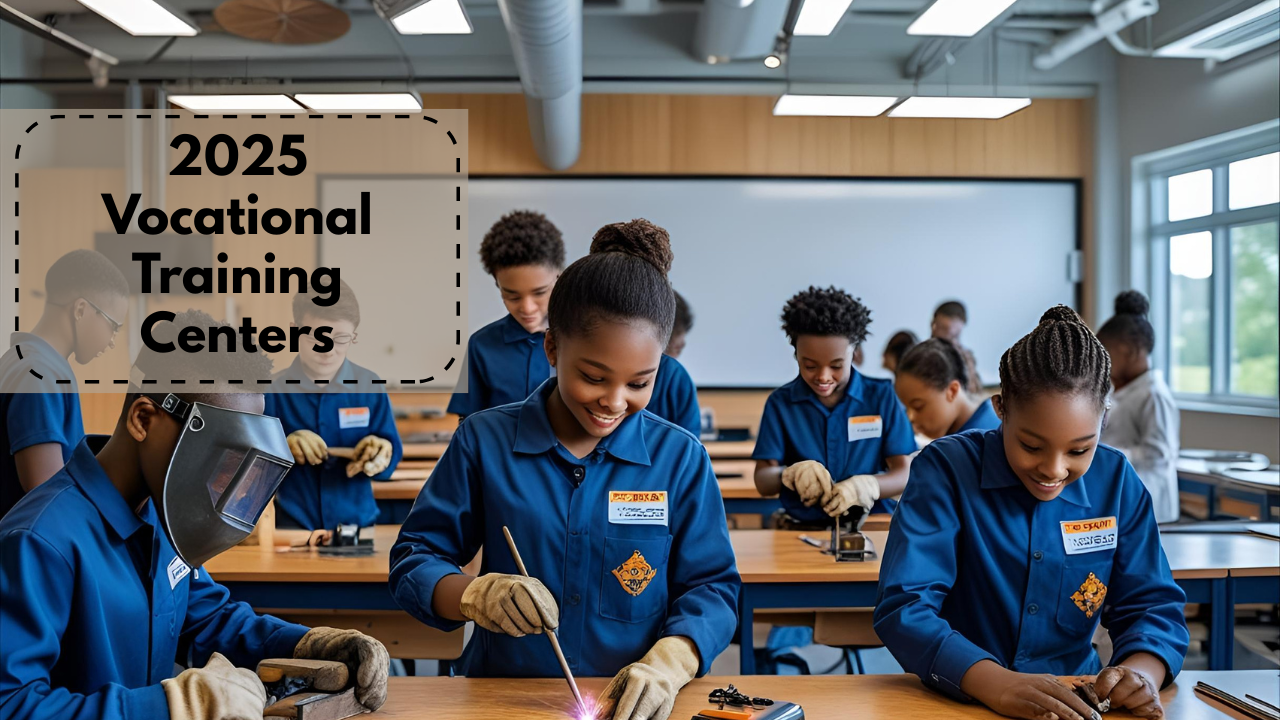In today’s fast-changing job market, having the right skills can open doors to better-paying, stable careers. But for many people, the cost of education or training is a major obstacle. That’s where free vocational training centers come in—offering cost-free, practical, and job-ready courses across a variety of trades and industries.
Whether you’re a recent graduate, unemployed, changing careers, or returning to the workforce, these free training programs in 2025 can help you gain in-demand skills, earn certifications, and land jobs faster.
Table of Contents
- Why Vocational Training Matters in 2025
- Who Can Benefit from Free Courses?
- Top Vocational Fields Offering No-Cost Programs
- Where to Find Free Training Centers Near You
- Eligibility and Application Process
- Tips for Choosing the Right Program
- Final Thoughts: Train Smart, Succeed Faster
1. Why Vocational Training Matters in 2025
As automation and digital transformation reshape industries, employers are seeking skilled workers who can hit the ground running. Vocational training—also called technical or career education—focuses on real-world job skills in fields like healthcare, construction, IT, logistics, and more.
In 2025, free vocational programs are being supported by:
- Government workforce development funds
- Local employment agencies
- Nonprofit organizations
- Corporate partnerships with training institutes
These programs offer hands-on learning, job placement assistance, and often certifications that are recognized by employers.
2. Who Can Benefit from Free Courses?
These programs are ideal for:
- Unemployed individuals looking for new job opportunities
- High school graduates not pursuing a traditional college degree
- Adults re-entering the workforce after a gap
- Workers seeking to switch careers
- Low-income earners needing higher-paying skills
- Veterans, single parents, and underserved communities
In many cases, no prior experience or qualifications are required—just a willingness to learn and participate fully.
3. Top Vocational Fields Offering No-Cost Programs
Here are some of the most in-demand sectors where free training programs are widely available in 2025:
a. Healthcare & Allied Services
- Certified Nursing Assistant (CNA)
- Phlebotomy Technician
- Medical Billing & Coding
- Home Health Aide
b. Information Technology
- Computer Support Specialist
- Cybersecurity Technician
- Web Development
- IT Helpdesk and Networking Basics
c. Skilled Trades
- Plumbing
- Electrical Technician
- Welding
- HVAC Installation and Repair
d. Logistics & Transportation
- Commercial Driver’s License (CDL) Training
- Forklift Operation
- Warehouse Management
e. Hospitality & Culinary Arts
- Food Handling & Safety
- Line Cook & Kitchen Operations
- Hotel and Tourism Services
f. Administrative & Customer Support
- Office Assistant Training
- Data Entry & CRM Tools
- Call Center Operations
Many of these programs offer flexible schedules, evening or weekend classes, and hybrid (online + in-person) formats.
4. Where to Find Free Training Centers Near You
Several national and local organizations offer free vocational training. Here’s where to start your search:
| Provider / Center | Type of Courses | How to Access |
|---|---|---|
| American Job Centers | Multiple vocational fields | www.careeronestop.org |
| Goodwill Career Services | Healthcare, admin, retail | www.goodwill.org |
| Job Corps (Ages 16–24) | Free training + housing for young adults | www.jobcorps.gov |
| Local Workforce Boards | Region-specific training & apprenticeships | State/local websites or employment offices |
| Community Colleges | Free or subsidized vocational certifications | Visit your local campus or board of education |
| Trade Unions & Apprenticeships | Paid on-the-job training in trades | Contact local union chapters |
You can also call 211 in the U.S. to get connected with local training and job placement resources.
5. Eligibility and Application Process
Each training program has its own eligibility rules, but in most cases, you’ll need to:
- Be over 16 or 18 years old (depending on the course)
- Show proof of residency or citizenship
- Meet income or employment status criteria (for funded programs)
- Commit to attending classes and completing coursework
- Some programs may require an aptitude test or orientation session
Documents commonly needed:
- Valid photo ID
- Proof of address
- Income statement or unemployment verification
- High school diploma (for some fields)
Most applications can be completed online, and many centers offer walk-in enrollment support.
6. Tips for Choosing the Right Program
To make sure you choose a program that works for you, consider the following:
- Career demand – Look for fields with high employment rates and job growth
- Program length – Courses may run from a few weeks to 6–12 months
- Certification value – Ensure the certificate is recognized by employers
- Job placement support – Check if the program offers internships or direct job referrals
- Class format – Choose between in-person, hybrid, or online options that fit your schedule
Also, speak with a career counselor or workforce advisor if you’re unsure about what path to take—they can help align training with your long-term goals.
7. Final Thoughts: Train Smart, Succeed Faster
In 2025, free vocational training centers are creating powerful opportunities for people to build careers without taking on student debt. Whether you want to work in tech, healthcare, or the trades, now is the perfect time to take advantage of these programs and upskill your way into a better future.
Don’t let financial barriers hold you back. These programs exist to help you learn, grow, and succeed—and they’re just a call or click away.
Start your journey today. A new skill could lead to your next big break.

